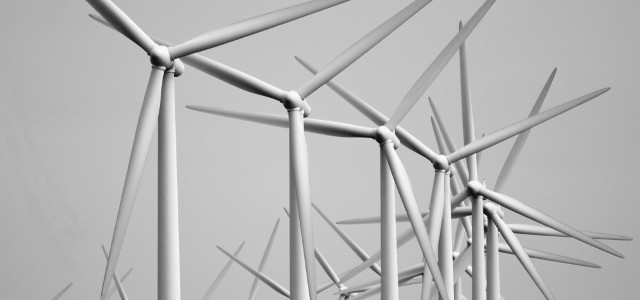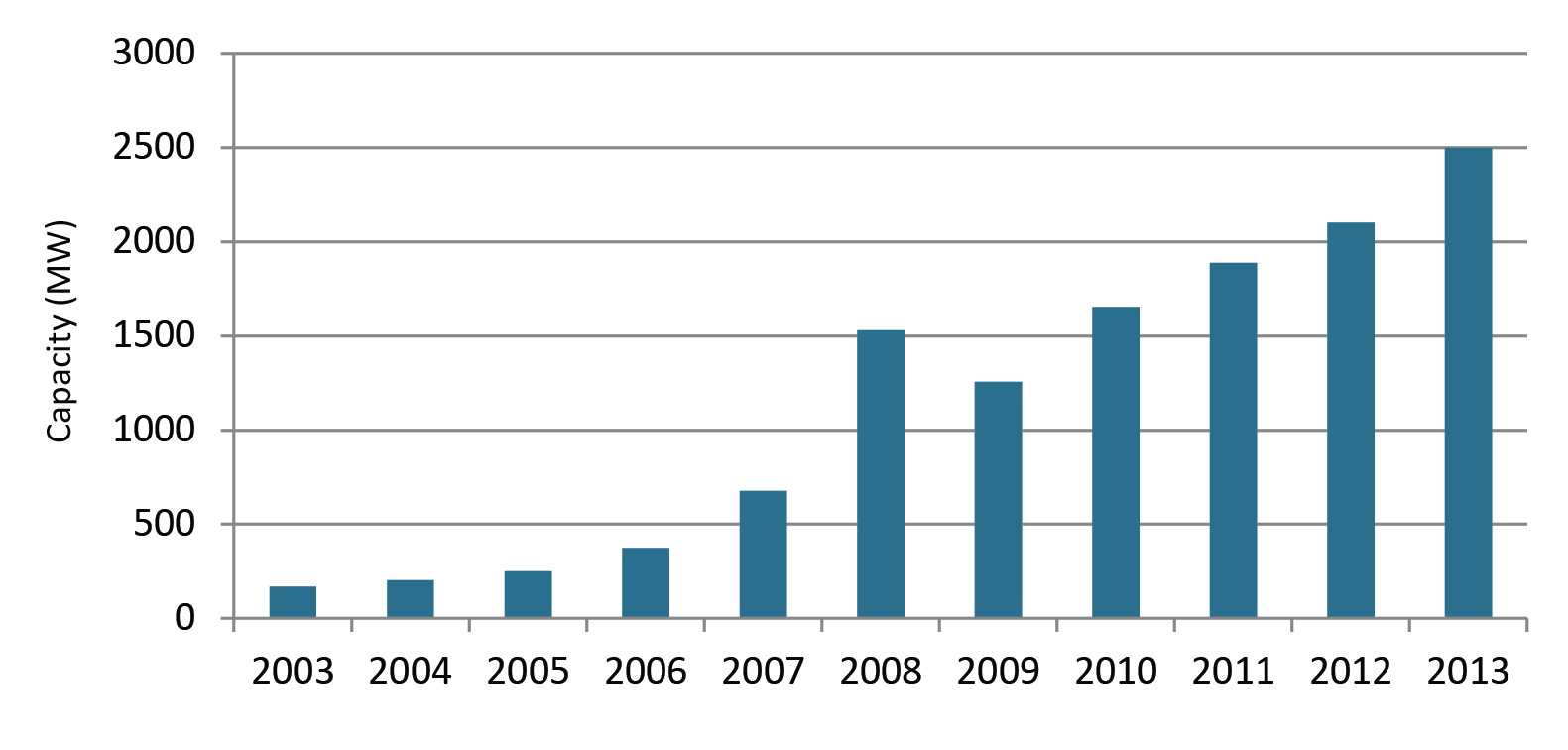Traditionally, Denmark has been a frontrunner in community energy. Due to policy changes, the civil society has had to look for new, more integrated business models. The Danish experience can serve as a blueprint for the future of Germany’s cooperatives, argues Boris Gotchev.

Danish energy co-ops are striving again. (Photo by Stig Nygaard, CC BY 2.0)
Citizen-led energy initiatives are a cornerstone of the German Energiewende. But 2014 was a tough year for them: considerably less energy cooperatives were founded by citizens than in 2013, and the political framework for such initiatives changed drastically. In 2012 almost half of the total installed renewable energy capacity in Germany was owned by private citizens. More than a thousand citizen-led energy initiatives, including energy cooperatives and citizen-owned wind farms, emerged, contributing to greater acceptance of renewables as well as boosting local economies. This was made possible by the fixed feed-in tariffs and purchase obligations for green power foreseen by the German Renewable Energy Sources Act (EEG). However, in 2014 the Federal Government made fundamental changes to the EEG. The operators of new renewable energy installations with an installed capacity in excess of 500 kilowatts (kW) are now obliged to market their electricity directly on the wholesale market. And instead of a fixed price, they now receive a sliding premium in addition to the revenue they earn from sales on the market. With these changes to the EEG, the legislator wants to create incentives for demand-driven electricity generation in order to better integrate renewables into national and European energy markets.
However, citizen groups and researchers have voiced their fears that the 2014 reform of the EEG will prevent smaller players such as citizen-led energy initiatives from participating in the expansion of renewables. More specifically, they argue that direct marketing will only increase the financing costs for small projects and bind citizen-led energy initiatives to marketing conditions set by a few wholesalers. If we turn to Denmark, where a similar reform was implemented in 2003, we see that market premiums and direct marketing can indeed halt the momentum of citizen-led energy initiatives. Yet the case of Denmark also shows that certain framework conditions can help to restore that momentum.
The Danish way: cooperatives, cooperation and compulsory civic participation
Denmark is a pioneer when it comes to wind energy and civic participation. In 2002 wind energy already accounted for 15 per cent of the country’s electricity generation (that proportion has since risen to 39 per cent). At that time, around 40 per cent of all installations were run by local wind energy cooperatives. However, following the introduction of a fixed market premium in 2003, the expansion of wind energy almost came to a standstill. Similar to the current situation in Germany, fixed remuneration was abolished and the operators of new installations had to market their electricity directly. Since then the remuneration of wind energy installations is restricted to a fixed market premium, which is determined in advance and paid in addition to revenues earned on the Danish wholesale market. However, this premium was very low and the high financial risk associated with it scared off most investors. Private citizens in particular saw no point in establishing new wind energy cooperatives or continuing to operate existing ones. As a result, no new cooperatives were founded in the period from 2003 to 2008.

Installed capacity traded by Vindenergi DK in MW. Source: IASS Potsdam based on data retrieved from www.vindenergi.dk
Since 2009 the number of wind turbines has, however, been increasing steadily and several new wind energy cooperatives have been established. This is due, on the one hand, to a reform of the Promotion of Renewable Energy Sources Act in 2009 and a significant increase in the market premium. On the other hand, three main factors have in my view encouraged the continued existence and establishment of wind energy cooperatives:
- Firstly, cooperatives and other private wind energy operators, such as farmers, have joined forces and established a joint trading cooperative, Vindenergi Danmark. Since 2003, it has been marketing the electricity generated by its members, who are at the same time shareholders in the cooperative. What’s more, Vindenergi Danmark works on a non-profit basis: profits are either reinvested or paid out as dividends. In 2013 the cooperative sold 2 500 MW of electricity, which represented a market share of 50 per cent. The large size of the portfolio and the cooperative organisational structure meant that electricity generation became increasingly profitable for small installation operators and fewer citizens were afraid of participating once again in this sector.
- Secondly, local cooperatives began to cooperate more frequently with municipalities, foundations, public utilities and energy companies. Wind energy projects are capital intensive, especially at the beginning of a project, when lots of money needs to be invested in feasibility studies, leases and licenses. Particularly for cooperatives, such a project carries a high risk: they have to make advance payments with the help of contributions from citizens and loans, but with no guarantee that the project will in fact be realised. To get around this problem, cooperatives are increasingly cooperating with financially strong partners. As an example, one could mention a local cooperative in Copenhagen, which set up two wind energy installations together with the energy giant DONG Energy. While the partners jointly coordinated the planning and construction phases, now each of them is operating one of the two installations completely independently of the other.
- Thirdly, new cooperatives also emerged as a result of a statutory regulation that obligates project sponsors to offer the local population minimum ownership of 20 per cent in any new installation.
German citizen-led energy initiatives should pool their resources and develop new business models
The case of Denmark shows that while market integration is a significant obstacle, it doesn’t necessarily mean the end of citizen-led power generation. Statutory regulations can foster civic participation. In the German Federal State of Mecklenburg-Vorpommern, for example, there are plans to introduce a civic participation law similar to that in Denmark. However, these kinds of measures are not uncontroversial. The case of Denmark also shows that the creation of an umbrella cooperative to market electricity and cooperation with partners minimises risks and improves the economic conditions for the foundation of new cooperatives. Hence the future of citizen-led energy initiatives in Germany does not depend solely on the political framework. The ability to forge networks, enter into cooperations and develop new business models will become increasingly important in future. This is already apparent. For example, 24 citizen-led energy initiatives have joined forces in the so-called Bürgerwerke (citizen utilities) in order to pool resources and market their electricity independently of the EEG. The progression from initiatives that merely generate electricity to those involved in both generation and marketing is seen as crucial.
When it comes to the Energiewende, Germany and Denmark still have a lot to learn from each other. The involvement of citizens in the expansion of renewables will remain an important issue as we strive to implement the Energiewende as a collaborative endeavour. Moreover, a recent report by the European Social and Economic Committee confirms the potential and significance of a citizen-orientated Energiewende for other European states too. The question of how Denmark and Germany will reorganise their fossil-fuel power plants is equally important. Denmark is considering the option of completely phasing out coal-based power generation by 2025. Both countries could intensify their cooperation in order to find out how a general societal consensus in relation to coal-based power generation can be achieved.
This blog post presents the findings of Boris Gotchev’s master’s thesis on “Market Integration and Wind Power Cooperatives in Denmark”. A more detailed summary of these findings can be found here. The post was first published on the blog of the Institute for Advanced Sustainability Studies (IASS) Potsdam and is reposted with permission.
About the three main factors encouraging the continued existence and establishment of wind energy cooperatives, the third one could on the one hand have had the most influence in Denmark but on the other hand may be a bit tricky by putting it in a law. Is there any information on how the EU views this approach in relation to article 49 of the Treaty on the Functioning of the European Union as this obligation could be seen as a restriction on the movement of capital?